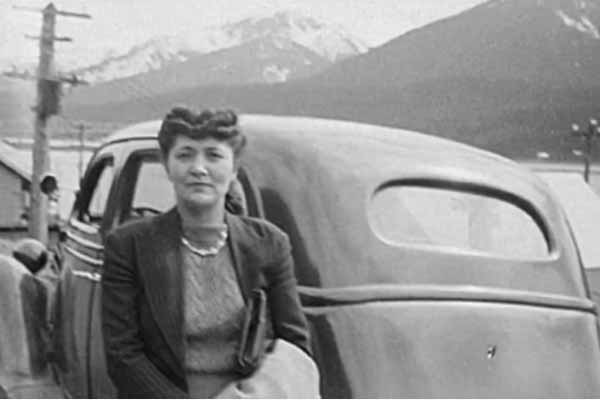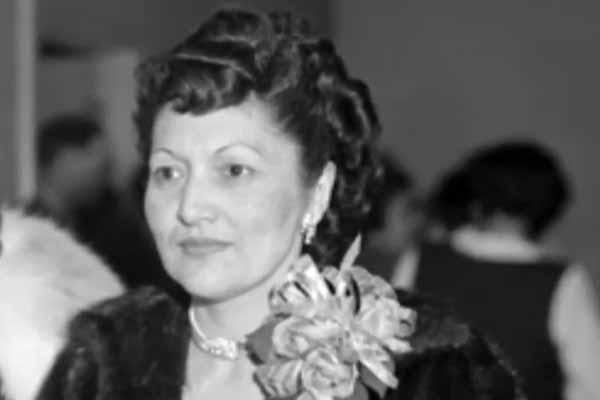Elizabeth Peratrovich is one of the important figures in American history. She was a strong advocate for civil rights in the early 1940s. Moreover, the activist began her journey from her own experiences and sufferings in American society. She provided her own testimonies to fight against racial discrimination, prejudice, and segregation.
The reformer was active in her efforts until the time of her death. In honor of her historical achievements, United States Mint released a $1 gold coin with her inscription in 2020. Furthermore, the campaigner was also credited in Alaska's Anti-Discrimination Act Of 1945. She has also been featured in many books and historical writings over the years.
Here, we will go through Elizabeth Peratrovich's life and her journey as an activist.
Kathleen Cleaver Biography - Professor of Law And Activist
Early Life And Family
The activist was born on July 4, 1911, in Petersburg, Alaska. She was born out of wedlock to Edith Tagcook Paul and her brother-in-law William Paddock. Moreover, Elizabeth's biological mother abandoned her right after her birth in the hands of the Salvation Army. Eventually, she was adopted by a Tinglit couple who named her Elizabeth Jean Wanamaker.
Elizabeth Peratovich's adoptive father, Andrew Wanamaker, was a Presbyterian minister. He was also an honorary charter member of the Alaska Native Brotherhood. Likewise, Elizabeth Peratovich's adoptive mother, Jean Wanamaker, was a famous basketweaver of her community. Moreover, the family lived in Sitka until Peratovich was ten years old and then shifted to Klawock.

Elizabeth Peratrovich's family were activists and fighting to get rights for Alaska natives. Photo Source: Social Media.
The young advocate completed her formal education at the Ketchikan High School. She then enrolled at Sheldon Jackson College for further studies. Afterward, Elizabeth graduated from Western Washington University.
For Elizabeth Peratovich, advocating for civil rights didn't come out of thin air. It was instead a result of the personal experiences of constant discrimination and degradation by the white people.
Additionally, her father was fighting to gain citizenship and equality for Alaska natives in the 1910s. Andrew's efforts also taught his daughter the importance of freedom and racial justice. It later manifested into her pursuing a career in the same field.
Elizabeth Peratrovich Net Worth And Career
The American activist fought for racial and social justice her whole life. She was nominated to be the Grand President of the Alaska Native Sisterhood, the counterpart of the Alaska Native Brotherhood. So, Elizabeth Peratovich's net worth mainly comprises her earnings from her activism career. However, she never revealed her income to the public.
The advocate joined Alaska Native Sisterhood to bring changes in society rather than earn money. Her passion for her works stems from her heart rather than for financial success. Still, as a high position holder, Elizabeth Peratoich's income must have been a considerable amount.
Earnings From Career
The Alaska native began her activist journey after marrying her husband, Roy Peratrovich. The latter has been a significant factor behind Peratrovich's career. Moreover, Elizabeth has always been sensitive about inequalities and segregation from a young age. Therefore, she desired to get the same treatment and facilities as other white residents of America.
During the early 1900s, Alaska natives weren't considered American citizens and lacked the right of citizenship and property ownership. They were granted citizenship in 1924, but the deep-rooted discrimination in American society remained the same.
In addition, the native children were forbidden from entering public schools and other venues. To further emphasize the point, there were signs of "Natives not welcome" in the gates.
To get away from the injustice, Peratrovich moved with her family from Klawock to Juneau. However, the situation there was even more horrifying than before. As a result, alongside her husband Roy, the civil rights activist petitioned the Territorial Governor, Ernest Gruening, to allow Native people entrance into public places. He agreed to help their efforts and helped them draft an anti-discrimination bill through Alaska's Territorial Legislature in 1943.
The Parliamentary house didn't pass the bill, but it didn't deter Peratrovich from her movement. She traveled to many places to create public awareness about their status quo. Eventually, the advocate was elected Grand President of the Alaska Native Sisterhood in 1944. Moreover, her efforts bore fruit after the government chose two Alaska natives in the legislature and passed the anti-discrimination bill in 1945.
Juneau Senator Allen Shattuck argued by calling the natives savage and exaggerating white civilization's 5000 years old history during the bill's drafting discussion. As a counterattack, Elizabeth spoke up about her family's gruesome living conditions and constant social injustices in the testimony. Moreover, her brutal honesty became one of the reasons behind the successful drafting of the anti-discrimination bill.
The incident marked Alaska as the first state to end Jim Crow laws twenty years before the passing of the Civil Rights Act in 1964. Afterward, the reformer's husband Roy Peratrovich got a job at the Federal Bureau of Indian Affairs in 1954. They then moved to Oklahoma and settled there for some period.
The grand president was a good speaker and presented her calm yet impactful speeches. Her testimony is also considered a decisive factor behind the historical declaration of 1945. As such, Elizabeth Peratrovich's net worth must have increased as her career progressed.
Elizabeth Peratrovich Husband And Children
Aforementioned, Elizabeth Peratrovich wedded Roy Peratrovich in 1931. The latter was a Klawock native with Tlingit and Yugoslav heritage. Moreover, Roy also worked as an activist alongside his wife. As a result, he was elected Grand President of the Alaska Native Brotherhood in 1940 and moved to Juneau later on, which began their activist journey.

Elizabeth Peratrovich's husband, Roy Peratrovich, joined her to help draft the anti-discrimination act for Alaska natives. Photo Source: Social Media.
The pair joined their forces to fight against social prejudice and intolerance in society. They shared similar views and faced every obstacle together. Additionally, the couple was proud parents of three children. Their daughter, Loretta Marie Montgomery, rarely made a public appearance.
Unlike her, Elizabeth Peratrovich's first son, Roy Peratrovich Jr., became the first Alaska native to be registered as a professional civil engineer. Additionally, he designed the original Brotherhood bridge situated over the Mendenhall river near Juneau.
Elizabeth Peratrovich's second son, Frank Allen Peratrovich, was appointed the Area Tribal Operations Officer at his father's initial workplace Bureau of Indian Affairs in Juneau.
A Tragic Ending
Aforementioned, Peratrovich shifted to Oklahoma in the late 1950s. After two years, she was diagnosed with breast cancer. Moreover, after that, the reformer's family returned to Juneau and began her treatment. Later, she was admitted to a Christain Science center in Seattle. Eventually, Elizabeth Peratrovich couldn't survive her illness and died on December 1, 1958.
The demise of such a legendary figure was disheartening and tragic. It made headlines all over the country. Furthermore, the campaigner was buried at Evergreen Cemetery in Juneau. Her husband, Roy Peratrovich, who passed away in 1989, is buried alongside her.
Trivia And Facts
- Elizabeth Peratrovich is featured in Annie Boochever's book Fighter in Velvet Gloves: Alaska Civil Rights Hero Elizabeth Peratrovich.
- Her civil rights works are safely protected at the Smithson National Museum of the American Indian.
- She was one of the inductees at the National Women's History Project in 2018.
- The Alaska Legislature named February 16th "Elizabeth Peratrovich Day."






